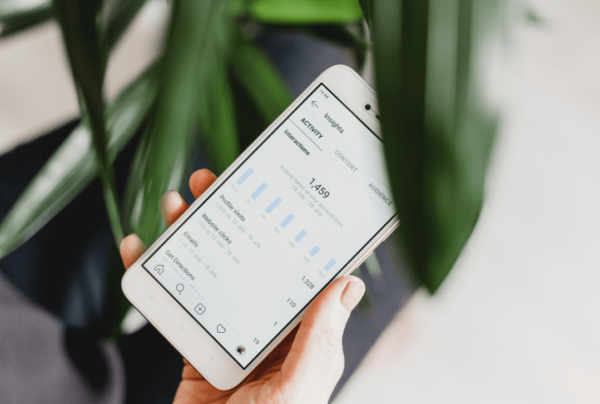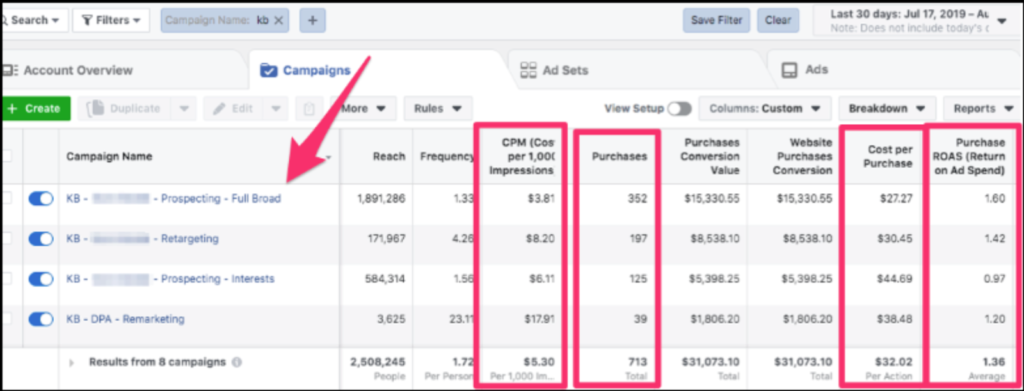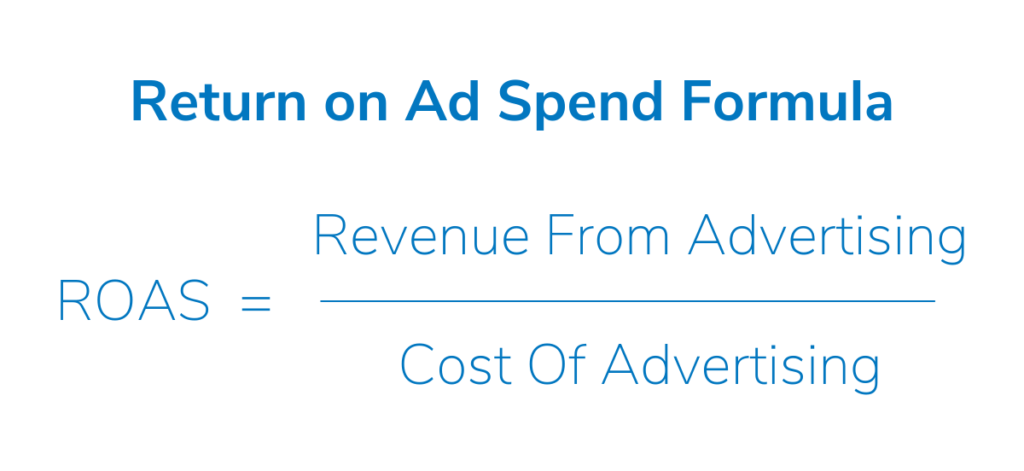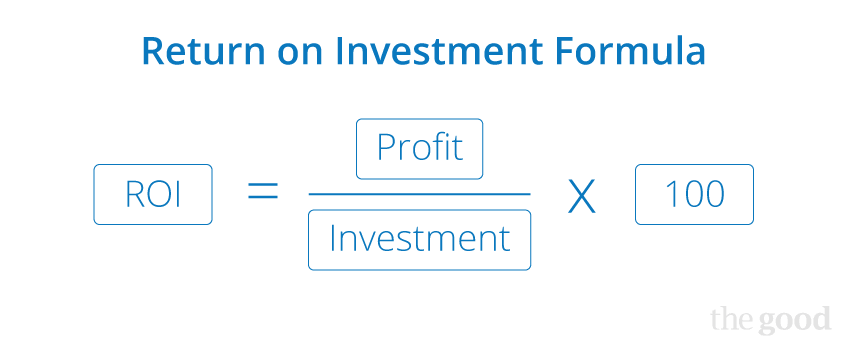
Improving ROAS: How to Increase Your Return on Advertising Spend
What do you know about this marketing metric? Learn more about ROAS for ecommerce companies, including how to calculate and improve it.
Ecommerce businesses have more competition than ever, so your marketing and advertising budgets have to be used as efficiently as possible.
But how do you know how much your paid traffic is costing you or how much revenue you’re generating from each dollar you spend to get shoppers to your site?
Most companies use a handful of key ecommerce metrics to track and measure success, including return on investment (ROI), cost per click (CPC), average order value (AOV), and return on ad spend (ROAS).
And while most marketing professionals understand how to calculate and track essential metrics, defining ROAS or explaining the difference between ROAS and ROI seems difficult for many.
So let’s fix that.
We’ll take a deeper look at what ROAS is, the formula to calculate it, and how smart use of optimization can improve your bottom line (aka, increase your amount of revenue) without having to increase your marketing budget.
Here’s what you’ll find in this article:
- What is ROAS?
- How to calculate ROAS
- How is ROAS different from ROI?
- Why is calculating ROAS important in ecommerce?
- What is a good ecommerce ROAS ratio?
- Increase Your ROAS: How to Improve Your Advertising Results
- Get Better Results from Your Ad Spend
What is ROAS?
ROAS is a way to measure the spend efficiency of your advertising campaigns — a ratio of how much revenue you generate per every dollar spent on advertising.
Other metrics (such as click-through rate or conversion rate) are meaningful in their own right, but they don’t address whether or not your money is being spent as wisely as possible. ROAS provides a zoomed-out look at whether or not a specific campaign is paying off, financially speaking.
Not quite sure how this plays out? Let’s pretend you’re using an ATM:
Scenario #1: You put one dollar in and get $5 back. That’s positive ROAS.
Scenario #2: You put one dollar in and get .50 cents back. That’s negative ROAS.
If you experienced scenario #1, you’d put as many dollars as possible into that machine, right? If you had scenario #2, you wouldn’t put any more money into that machine.
An ad campaign is similar to an ATM machine with different outcomes. You want to find the ones that turn one dollar into more dollars, not the ones that turn dollars into cents.
A reminder: ROAS is similar to ROI, but they’re not the same.
- ROAS only looks at the monetary return from a specific ad campaign.
- ROI measures the return of a larger investment (all Facebook advertising, for example).

How to calculate ROAS for your ecommerce business
Now that ROAS as a metric makes a bit more sense, here’s how you calculate it. ROAS is the ratio of the revenue generated from an ad campaign compared to the cost of the campaign.
ROAS calculation looks like this:

Here’s an example: Let’s say you allocate $5,000 of yourmarketing budget to a pay-per-click (PPC) campaign. By tracking the clicks that the campaign generated and following them through to check-out, you’re able to determine that those clicks generated $15,000 in sales.
To calculate your ROAS you’d divide $15,000 by $5,000, so every dollar of ad spend resulted in $3.00 worth of sales. (In your ad management platform, this would display as a 3x ROAS.)
And referring back to our ATM example, that means for every dollar you put in you’d get $3 back.
Makes sense, right?
How is ROAS different from ROI?
Here’s where some of the confusion comes in. Some marketers say, “Hey, the net revenue is really $10,000. You have to subtract the advertising costs from sales resulting from the ads to get the true figure.”
And that’s true… if you’re calculating return on investment.
Here’s how to calculate ROI:

And here’s how that looks, using our example: (15,000 – 5,000) x 100 / 5,000 = 20% ROI
See the difference?
Return on Investment is one measure of the profitability of your business. It is a ratio of net revenue to the expense required to obtain that revenue. Both metrics, ROAS and ROI, are important to track and monitor. It is essential, though, that there is agreement on how each metric is derived, and that they are always calculated in the same way. Otherwise, you can be deceived by movements in the results.
Why is calculating ROAS important in ecommerce?
ROAS tells you how much money you’re getting in return for every dollar you spend on advertising. It’s an essential metric for evaluating how well your advertising campaigns performed and how they contribute to your store’s bottom line.
To help keep costs in check, marketing professionals often use a target ROAS when planning campaigns. To estimate how much revenue you expect to get back from an ad spend, reverse engineer the formula. (Advertisers, for example, often do this to develop a target ROAS for their Google AdWords campaigns.)
Marketing and advertising campaigns play a big role in brand awareness, sale promotions, and introducing new products. In short, these campaigns often lead to sales, and knowing how efficient your campaigns are is imperative if you want to increase sales.
Calculating ROAS and using that data helps ecommerce companies increase clicks — driving traffic and hopefully boosting sales.
And on the flip side, if you’re actively monitoring ROAS you’re able to turn off unprofitable campaigns quickly — so you aren’t throwing away money promoting ads that aren’t converting well.
What’s a low ROAS and a high ROAS for an ecommerce company?
Your target ROAS should be the average conversion value that you’re expecting to receive for every dollar you spend on an advertisement. The target will vary according to the company and the product being sold, but three to five times return on ad spend ratio are good numbers to aim for.
What are ecommerce companies seeing in terms of ad performance? Let’s take a look at how Google, Facebook, Instagram, and Amazon ecommerce ads performed in 2020, according to one report:
Google shopping: ROAS improved 3% year over year.

Facebook ads: ROAS improved 29% year over year.

Instagram ads: ROAS improved by 11% year over year.

Amazon ads: ROAS remained around 7.95.

Expect average ROAS to change heading into the new year. Adobe is predicting that 2022 will be the first trillion-dollar year for ecommerce (which will likely alter the cost of ads, purchasing trends and consumer habits).
Of course, a brand’s ideal ROAS will vary depending on what stage the business is in. New ecommerce stores might operate with higher margins and others could be able to afford higher advertising costs. Your target ROAS will likely change over time and per campaign.
When optimization is properly implemented, your return on ad spend ratio can jump up significantly (more on that later).
At The Good, we tend to say a good ROAS can double your investment, and (more importantly) is a metric that keeps improving through the diligent application of optimization and a rigorous testing protocol.
ROAS tracking helps you evaluate the effectiveness of your advertising and marketing efforts. When combined with customer lifetime value (CLV), ROAS provides insight into where you should invest your marketing dollars to receive the most impactful results.
Increase Your ROAS: How to Improve Your Advertising Results
Remember that ROAS is determined by dividing the total revenue produced from your ads, by the cost of those ads. If revenue increases — but ad spend remains the same — your ROAS will grow.
An ad campaign can perform poorly due to a number of reasons: poor audience targeting, a low click-through rate (i.e., poor creative), or a low conversion rate.
While we might not be design experts, we do know a lot about conversions.
Investing in conversion optimization doesn’t just help your ad campaigns, it helps you make the most out of ALL of your site traffic, which is why we recommend starting there.
How can you increase your ROAS? It’s simple: through optimization. You can use optimization to:
- Remove friction and convert more people who click on your ads into paying customers.
- Optimize your landing pages and product pages to ensure a seamless shopping experience so consumers will want to buy more (increase average order value).
- Reduce cart abandonment, meaning more people make it on through to completing a purchase on your site.
There are multiple touch points that occur between an advertisement and payment. You can (and should) use optimization to smooth out the path to conversion at any (or all) potential pain points.
Enjoying this article?
Subscribe to our newsletter, Good Question, to get insights like this sent straight to your inbox every week.
By removing friction in the user path, you’ll create a seamless buying experience for your customers. Believe it or not, we’ve seen ecommerce websitesdouble their ROAS after engaging in an optimization program.
It’s not uncommon for our agency to engage with a client that’s prepared to give up on pay-per-click advertising altogether. We frequently hear from ecommerce brands that PPC advertising just isn’t suited for their business, or that it’s a waste of time and resources.
Here’s the thing: after we apply sound optimization principles to landing pages and the checkout procedure, and that same business gives PPC another shot, they’re always surprised by the difference that optimization had on the efficiency of their campaigns.
Get Better Results from Your Ad Spend
By determining your present ROAS, then incorporating the principles of optimization, you’ll be well on your way to improving your company’s ROAS for their future advertising efforts and digital marketing campaigns.
Next steps:
- Calculate your current ROAS and ROI.
- Use your current expenses to calculate your target ROAS.
- If you’re not hitting your target, audit the product pages your ads are linked to.
Interested in learning the laws of optimization?
Opting In To Optimization is a set of principles that will help digital leaders capitalize on unprecedented market demand and build sustainable, thriving businesses.

About the Author
James Sowers
James Sowers is the former Director of The Good Ventures. He has more than a decade of experience helping software and ecommerce companies accelerate their growth and improve their customer experience.